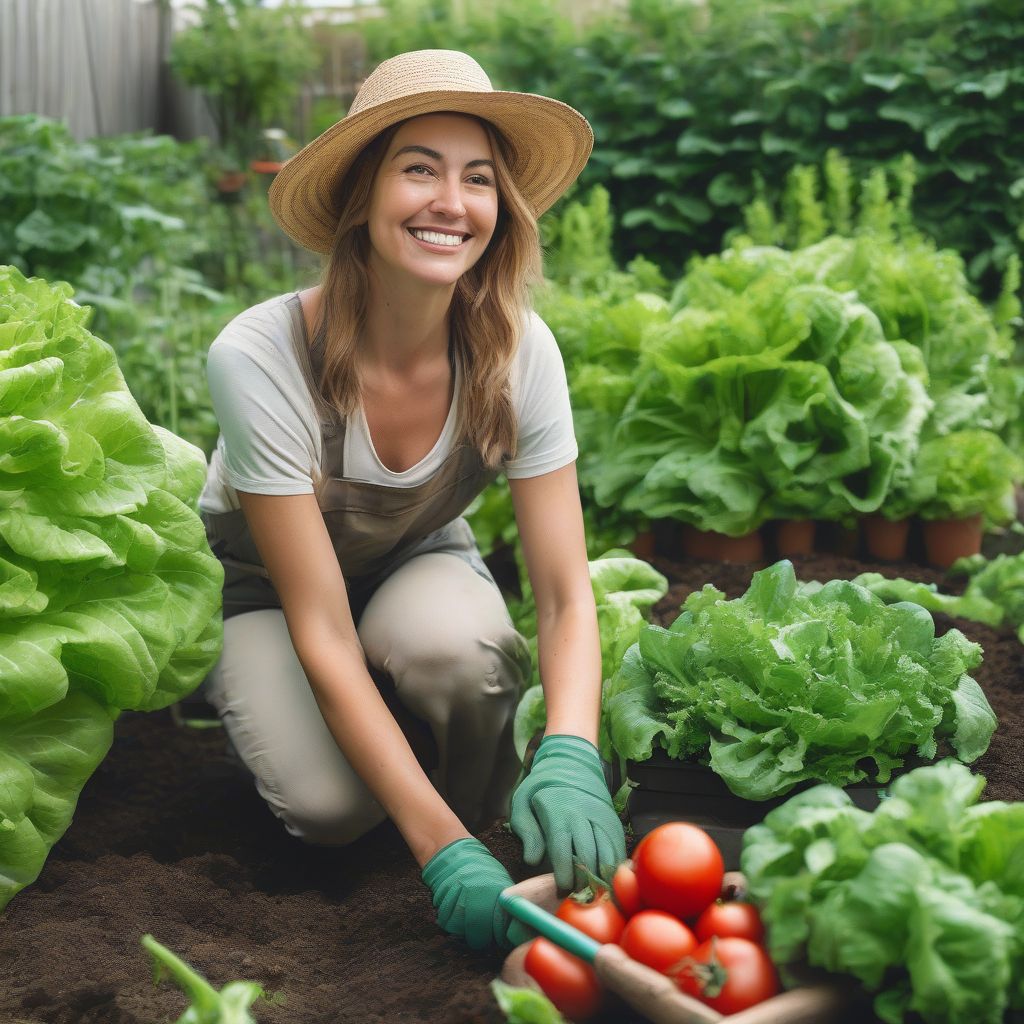Have you ever dreamt of strolling through your own garden, plucking sun-ripened tomatoes and crisp cucumbers for your next meal? Imagine the taste of fresh, organic produce bursting with flavor, all grown with your own two hands! Starting an organic garden might seem daunting at first, but with a little guidance and a sprinkle of enthusiasm, it’s a truly rewarding endeavor for any beginner. Let’s dig in and explore the wonderful world of organic gardening!
 Starting An Organic Garden
Starting An Organic Garden
Planning Your Organic Oasis
Just like any good recipe, a successful organic garden begins with a well-thought-out plan.
Choosing the Perfect Location
- Sunlight: Most vegetables need at least 6 hours of direct sunlight per day. Observe your yard throughout the day to find the sunniest spot.
- Accessibility: Choose a location that’s easily accessible for watering, weeding, and harvesting.
- Soil Drainage: Avoid areas where water tends to pool after rain. Good drainage is essential for healthy plant roots.
Deciding What to Grow
- Start Small: Begin with a few easy-to-grow vegetables like lettuce, radishes, or beans.
- Consider Your Climate: Select plants that thrive in your region’s specific climate and growing season.
- Grow What You Love: Choose vegetables and herbs that you and your family enjoy eating.
Building Healthy Soil: The Foundation of Organic Gardening
In the world of organic gardening, soil is far more than just dirt – it’s a living ecosystem teeming with beneficial organisms.
The Importance of Compost
Compost is the magic ingredient for healthy, nutrient-rich soil. It’s made from decomposed organic matter like kitchen scraps and yard waste.
- Benefits of Compost: Improves soil structure, enhances drainage, provides essential nutrients, and promotes beneficial microbial activity.
- Creating Your Own Compost: You can easily make compost at home using a compost bin or tumbler.
Starting with Quality Soil
- Soil Testing: Get a soil test to determine its pH level and nutrient content. This will help you amend the soil appropriately.
- Organic Soil Amendments: Improve your soil’s fertility and structure by adding organic matter like compost, aged manure, or cover crops.
Planting Your Organic Garden
With your soil prepped and ready, it’s time to bring your garden to life!
Starting from Seed vs. Transplants
- Seeds: Starting from seed is often more economical and allows for greater variety. Some seeds, like tomatoes and peppers, benefit from being started indoors a few weeks before the last frost.
- Transplants: Purchasing seedlings from a reputable nursery can give your garden a head start, especially for plants that are slow to mature.
Planting Techniques
- Follow Spacing Guidelines: Proper spacing ensures adequate air circulation and sunlight penetration.
- Watering: Keep the soil consistently moist, especially during the first few weeks after planting.
- Mulching: Apply a layer of organic mulch, like straw or wood chips, to suppress weeds, conserve moisture, and regulate soil temperature.
Maintaining Your Organic Garden
An organic garden thrives with regular care and attention.
Natural Weed Control
- Mulching: A thick layer of mulch helps prevent weed seeds from germinating.
- Hand-Weeding: Regularly remove weeds by hand, especially when they are young and small.
- Organic Herbicides: For persistent weed problems, consider using organic herbicides like vinegar or corn gluten meal.
Organic Pest Control
- Encourage Beneficial Insects: Attract pollinators and beneficial insects like ladybugs and lacewings, which prey on garden pests.
- Companion Planting: Plant certain herbs and flowers, like basil and marigolds, alongside vegetables to deter pests.
- Organic Pesticides: If needed, use organic pesticides like insecticidal soap or neem oil as a last resort.
Harvesting the Fruits (and Vegetables!) of Your Labor
There’s nothing quite like savoring the flavors of your homegrown, organic produce.
- Harvest at Peak Ripeness: Taste is at its peak when fruits and vegetables are harvested at the right stage of maturity.
- Regular Harvesting: Encourage continued production by harvesting regularly.
- Enjoy Your Bounty! Share your harvest with friends, family, or preserve it for later enjoyment.
Tips for Continuous Growth
- Succession Planting: Plant a new crop of fast-growing vegetables like lettuce or radishes every few weeks to ensure a continuous harvest.
- Crop Rotation: Rotate your crops each year to prevent soil-borne diseases and pests.
- Keep Learning: Gardening is a journey of continuous learning. Don’t be afraid to experiment and try new techniques.
Starting an organic garden is a rewarding experience that connects you with nature and nourishes your body with healthy, delicious food. By following these tips for beginners, you’ll be well on your way to cultivating a thriving organic garden and enjoying the fruits (and vegetables!) of your labor.
What are your favorite vegetables to grow? Share your gardening experiences and tips in the comments below!
[amazon bestseller=”organic gardening for beginners”]
